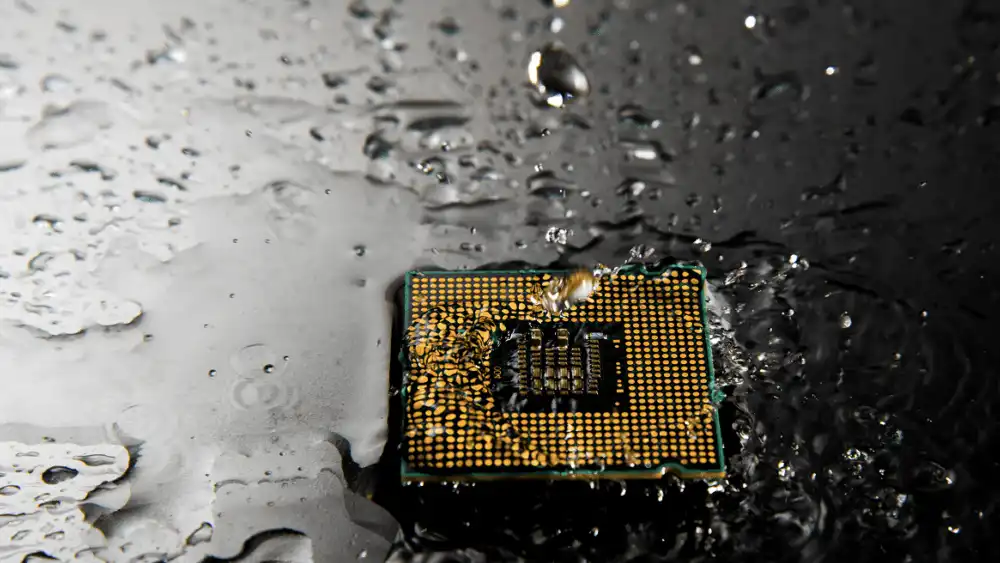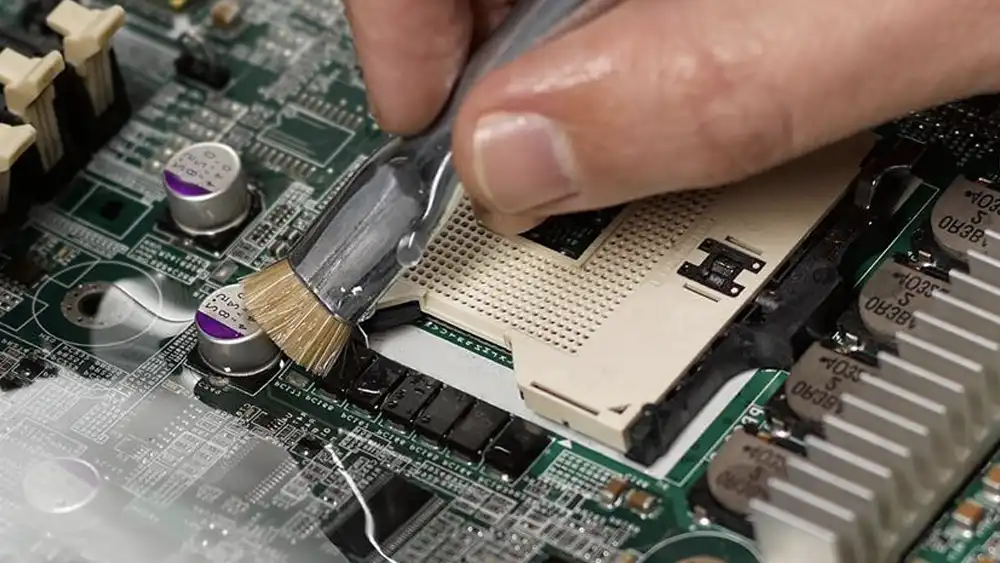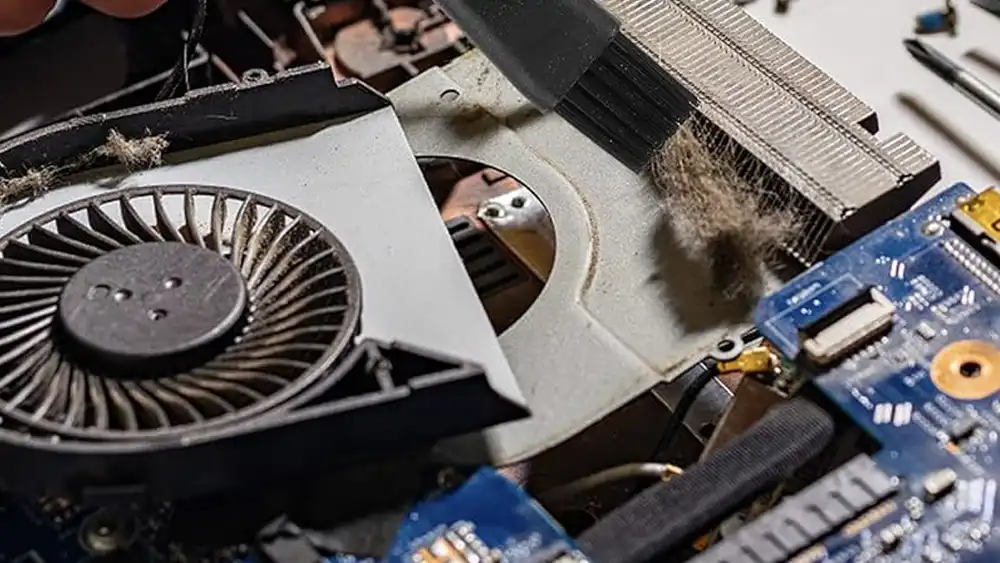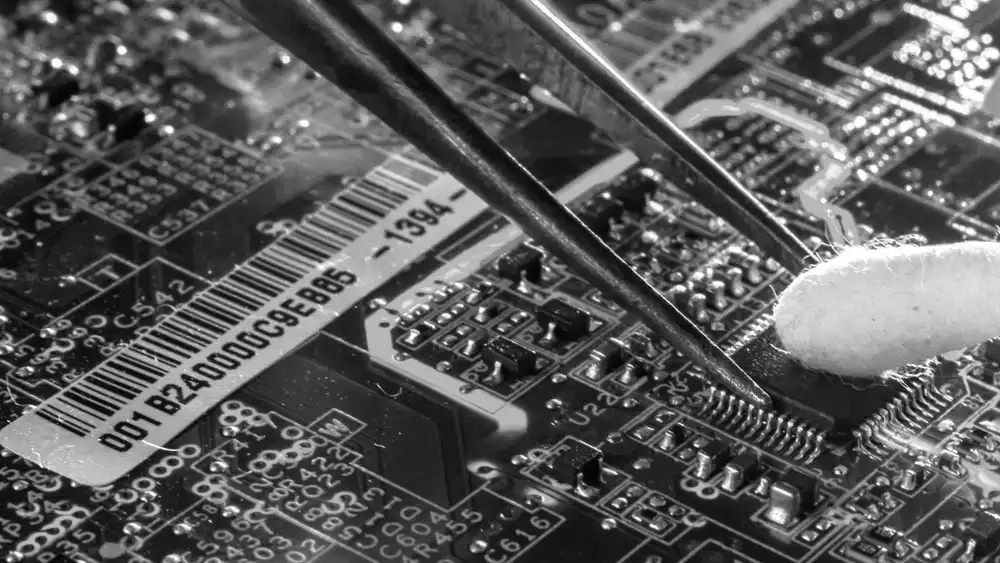With the development of the electronic devices, we can’t live a happy life without using the electronic components. So that electronic components are playing an increasingly important role in our daily lives, and today we will know how to clean electronic components with the right method.
Introduction to Cleaning Electronic Components
Cleaning electronic components is crucial for maintaining their performance and longevity.
Electronic devices accumulate dust, dirt, and grime over time, which can hinder their operation and even cause damage. Therefore, cleaning electronic components is essential for keeping their efficient functioning all the time.
So we will share the importance of cleaning electronic components, including the safety precautions, considerations, and cleaning tools & materials required to achieve well cleaning effect.
Importance of Cleaning Electronic Components

Regular cleaning of electronic components is paramount due to several reasons.
Firstly, accumulated dust, dirt, and debris can impede the proper functioning of electronic devices. Over time, this buildup can interfere with airflow, causing components to overheat and potentially leading to malfunctions or even permanent damage.
Moreover, cleanliness directly impacts the performance and longevity of electronic components. Clean components operate more efficiently, as they are not hindered by dust or dirt obstructing their functionality. This can result in smoother operation, faster processing speeds, and overall improved performance of electronic devices.
Additionally, proper cleaning helps prevent corrosion and oxidation of electronic connections. Dust and debris can trap moisture, leading to the formation of corrosive substances that can degrade electrical connections over time. By regularly cleaning electronic components, users can mitigate the risk of corrosion and prolong the lifespan of their devices.
Furthermore, maintaining cleanliness is essential for ensuring the safety of electronic devices and their users. Dust buildup can pose fire hazards, especially in devices with cooling fans or ventilation systems. Regular cleaning helps eliminate these risks and promotes a safe operating environment for electronic devices.
Safety Precautions Before Cleaning
Before starting the cleaning process, it’s essential to take necessary safety precautions to avoid damaging the electronic components or risking personal safety.
Power Off and Unplug
Always power off and unplug electronic devices before cleaning to avoid electrical hazards.
Antistatic Measures
Use antistatic wrist straps or mats to prevent static electricity from damaging sensitive electronic components.
Tools and Materials Required for Cleaning Electronic Components

Here are the tools and materials that can help you clean the electronic components with high efficiency.
Isopropyl Alcohol:
Isopropyl alcohol is a common cleaning agent used for removing dirt, grease, and grime from electronic components. It evaporates quickly without leaving residue, making it safe for use on sensitive electronics.
Microfiber Cloth:
A soft microfiber cloth is ideal for wiping electronic components without scratching or damaging delicate surfaces. It effectively removes dust, fingerprints, and smudges without leaving lint behind.
Compressed Air:
Compressed air in a can or air duster is essential for blowing away dust and debris from hard-to-reach areas such as keyboard crevices, fan vents, and circuit boards. It helps dislodge stubborn particles without causing damage.
Soft Brush:
A soft-bristled brush, such as a paintbrush or electronics cleaning brush, is useful for gently removing dust and debris from electronic components. It can reach into tight spaces and corners without causing scratches or abrasions.
Antistatic Wrist Strap or Mat:
An antistatic wrist strap or mat is crucial for preventing static electricity buildup during the cleaning process. It helps protect sensitive electronic components from electrostatic discharge, which can cause damage.
Electronic Component Cleaner Spray:
Electronic component cleaner spray is specifically formulated to remove dust, dirt, and other contaminants from electronic components. It comes in a convenient spray bottle for easy application and helps ensure thorough cleaning without damaging delicate parts.
Distilled Water (Optional):
Distilled water can be used in combination with isopropyl alcohol for cleaning stubborn stains or residues from electronic components. However, it should be used sparingly and only on surfaces that can tolerate moisture.
Lint-Free Swabs (Optional):
Lint-free swabs or cotton buds can be used for precise cleaning of small components or tight spaces. They are particularly useful for applying cleaning solutions to specific areas without spreading contaminants.
Non-conductive Cleaning Solution (Optional):
Non-conductive cleaning solutions specifically designed for electronics can be used for removing tougher stains or residues. These solutions are formulated to be safe for use on electronic components and leave no residue behind.
Cleaning Process for Different Electronic Components

Different electronic components require specific cleaning methods to ensure thorough and safe cleaning.
Cleaning Motherboards
When cleaning motherboards, use compressed air to remove dust and a soft brush to gently clean between components. Avoid using excessive force to prevent damage.
Cleaning Circuit Boards
For circuit boards, use a soft brush and isopropyl alcohol to gently remove dirt and debris. Ensure the board is completely dry before reassembly.
Cleaning Keyboards
For cleaning keyboards, use compressed air to blow away loose debris, followed by wiping the keys with a microfiber cloth dampened with isopropyl alcohol.
Cleaning Screens
When cleaning screens, use a microfiber cloth lightly dampened with water or a screen cleaner specifically designed for electronic displays. Avoid using abrasive materials that can scratch the screen.
Ultrasonic Cleaner for Electronic Components

An ultrasonic cleaner is a device used for cleaning electronic components through the process of ultrasonic cavitation. This technology involves the creation of high-frequency sound waves (usually above the range of human hearing) in a cleaning solution. These sound waves create millions of microscopic bubbles in the liquid, which collapse upon contact with the surface of the electronic component.
The rapid implosion of these bubbles generates high-pressure waves that effectively dislodge dirt, dust, and other contaminants from the surface of the electronic component. This process allows for thorough cleaning even in intricate or hard-to-reach areas, such as between circuit board components or inside crevices.
Ultrasonic cleaners are particularly beneficial for cleaning electronic components for several reasons:
- Efficiency: Ultrasonic cleaning is highly efficient and can remove stubborn contaminants from electronic components with minimal effort. It eliminates the need for manual scrubbing or agitation, saving time and labor.
- Gentleness: Despite its powerful cleaning action, ultrasonic cleaning is gentle on delicate electronic components. It does not involve harsh chemicals or abrasive scrubbing, reducing the risk of damage to sensitive parts.
- Versatility: Ultrasonic cleaners can accommodate a wide range of electronic components, from circuit boards and connectors to small parts and assemblies. They are suitable for cleaning various materials, including metals, plastics, and ceramics.
- Uniformity: Ultrasonic cleaning ensures uniform cleaning across the entire surface of the electronic component, including areas that are difficult to reach by traditional cleaning methods. This helps maintain consistent performance and reliability.
- Safety: Ultrasonic cleaning is a safe and environmentally friendly process. It typically uses water-based cleaning solutions and does not produce harmful fumes or residues.
When using an ultrasonic cleaner for electronic components, it’s essential to follow manufacturer instructions and recommendations for optimal results. Additionally, appropriate safety precautions should be observed, such as wearing protective gear and ensuring proper ventilation in the cleaning area.
Recommended Combination for Cleaning Electronic Components of the System
To effectively clean the electronic components of your system, follow this recommended combination:
- Start by using compressed air to blow away loose dust and debris from hard-to-reach areas such as fan vents, keyboard crevices, and circuit boards.
- Next, use a soft brush or electronics cleaning brush to gently remove any remaining dust and debris from the components. Be careful not to apply too much pressure to avoid damaging sensitive parts.
- For stubborn stains or residues, lightly dampen a lint-free microfiber cloth with isopropyl alcohol and gently wipe the surfaces of the electronic components. Ensure the cloth is not dripping wet to prevent moisture from entering the system.
- If necessary, use an electronic component cleaner spray to target specific areas that require deeper cleaning. Follow the manufacturer’s instructions for safe and effective use of the cleaner spray.
- Finally, allow the components to air dry completely before reassembling the system and powering it on.
By following this recommended combination, you can effectively clean electronic components of your system, ensuring optimal performance and longevity.
Tips for Effective Cleaning Electronic Components
To ensure effective cleaning without damaging electronic components, follow these tips:
Avoiding Excessive Moisture
Avoid using excessive moisture when cleaning electronic components to prevent damage from water or liquid ingress.
Handling Delicate Components
Handle delicate electronic components with care to avoid bending or breaking them during the cleaning process.
Regular Maintenance Schedule
Establish a regular maintenance schedule to clean electronic components, ensuring optimal performance and longevity.
Common Mistakes to Avoid
When cleaning electronic components, it’s essential to avoid common mistakes that can lead to damage or ineffective cleaning.
Using Harsh Chemicals
Avoid using harsh chemicals or abrasive materials that can damage sensitive electronic components.
Ignoring Manufacturer Guidelines
Always follow manufacturer guidelines and recommendations for cleaning electronic devices to prevent voiding warranties or causing damage.
Conclusion
Cleaning electronic components is essential for maintaining optimal performance and prolonging the lifespan of electronic devices. Following proper cleaning methods and safety precautions, you can ensure your devices operate smoothly and efficiently for years to come.
FAQs
How often should I clean my electronic components?
It’s recommended to clean electronic components regularly, depending on usage and environmental factors. Generally, cleaning once every few months is sufficient.
Can I use water instead of isopropyl alcohol for cleaning?
It’s not recommended to use water for cleaning electronic components as it can cause damage due to moisture. Isopropyl alcohol evaporates quickly and leaves no residue, making it a safer choice.
Is it safe to use a vacuum cleaner for cleaning electronic components?
While vacuum cleaners can be used to remove loose debris, it’s essential to use caution to avoid damaging delicate components with excessive suction or static electricity buildup.
Should I disassemble my device before cleaning?
Disassembling electronic devices for cleaning is not always necessary. However, if there is visible dirt or debris inside the device, it may be advisable to disassemble it carefully following manufacturer guidelines.
Can cleaning electronic components improve their lifespan?
Yes, regular cleaning of electronic components can help prevent overheating and damage caused by dirt and debris buildup, thereby extending their lifespan.